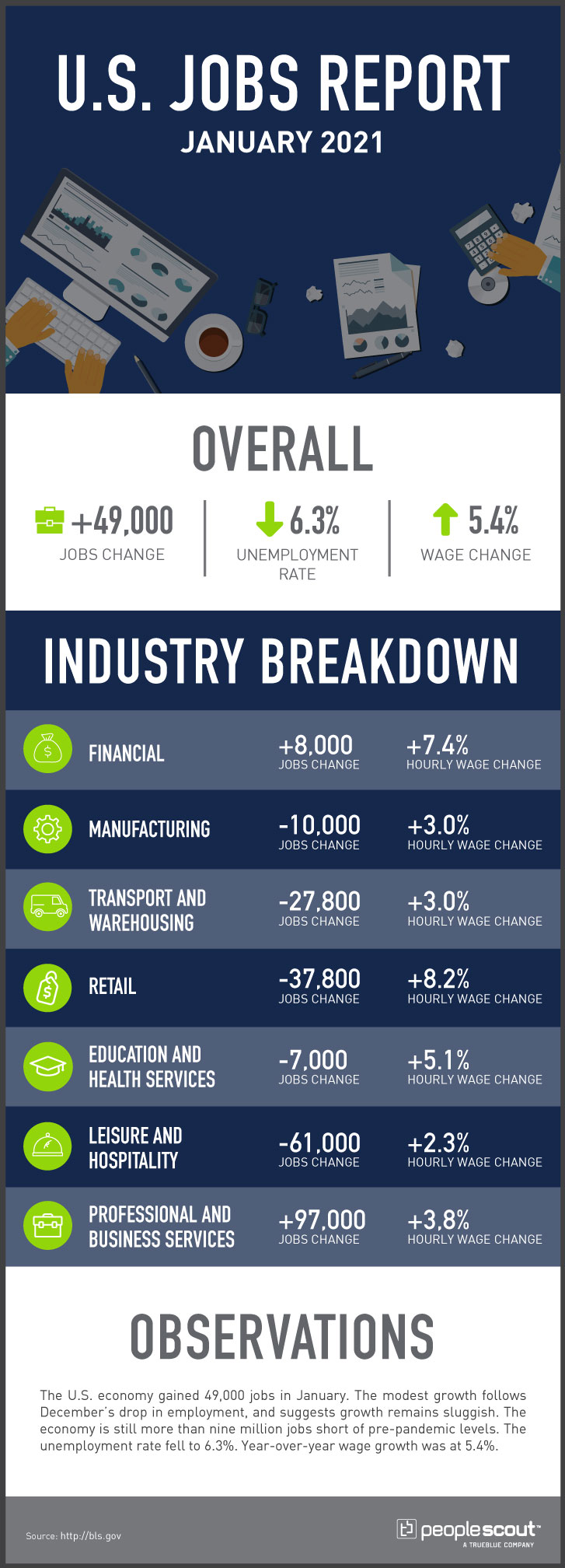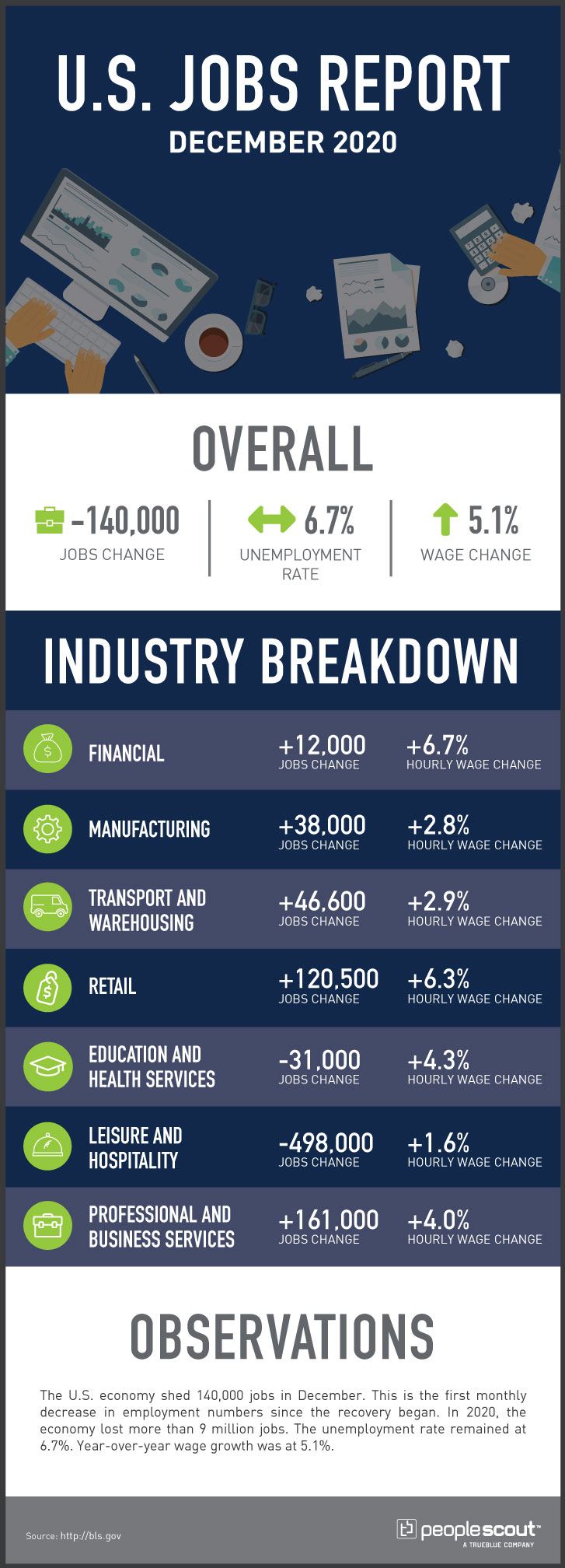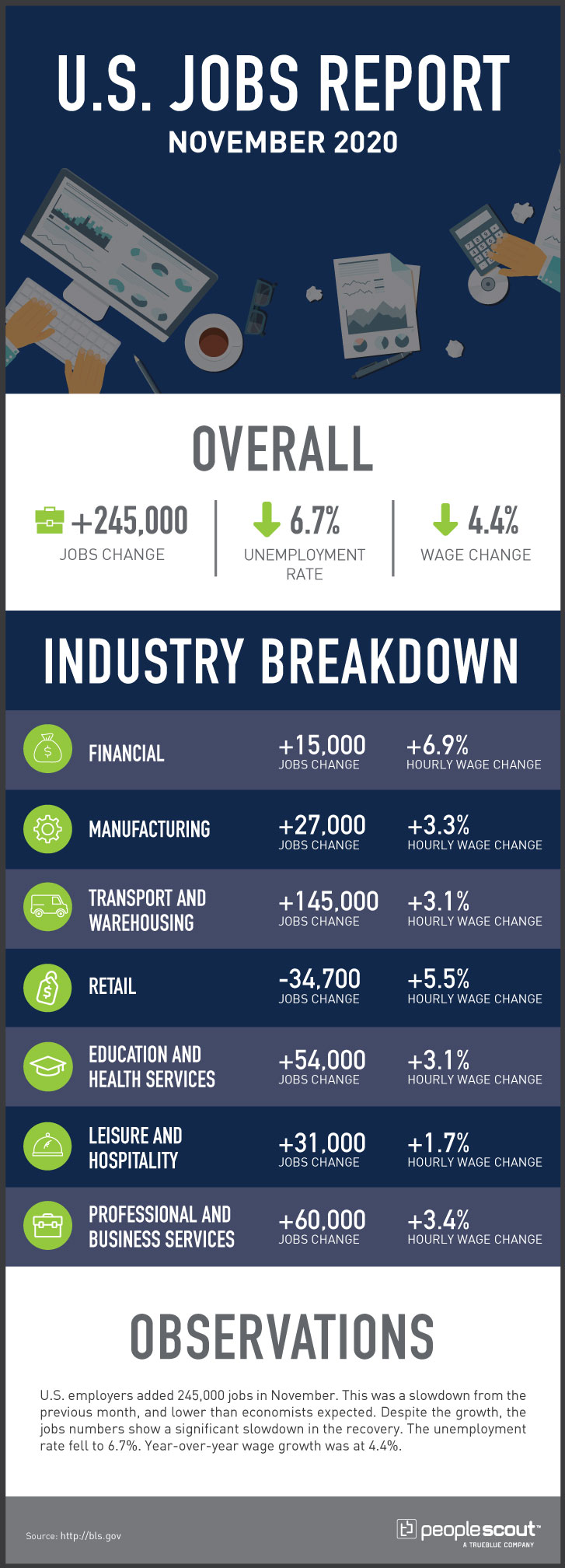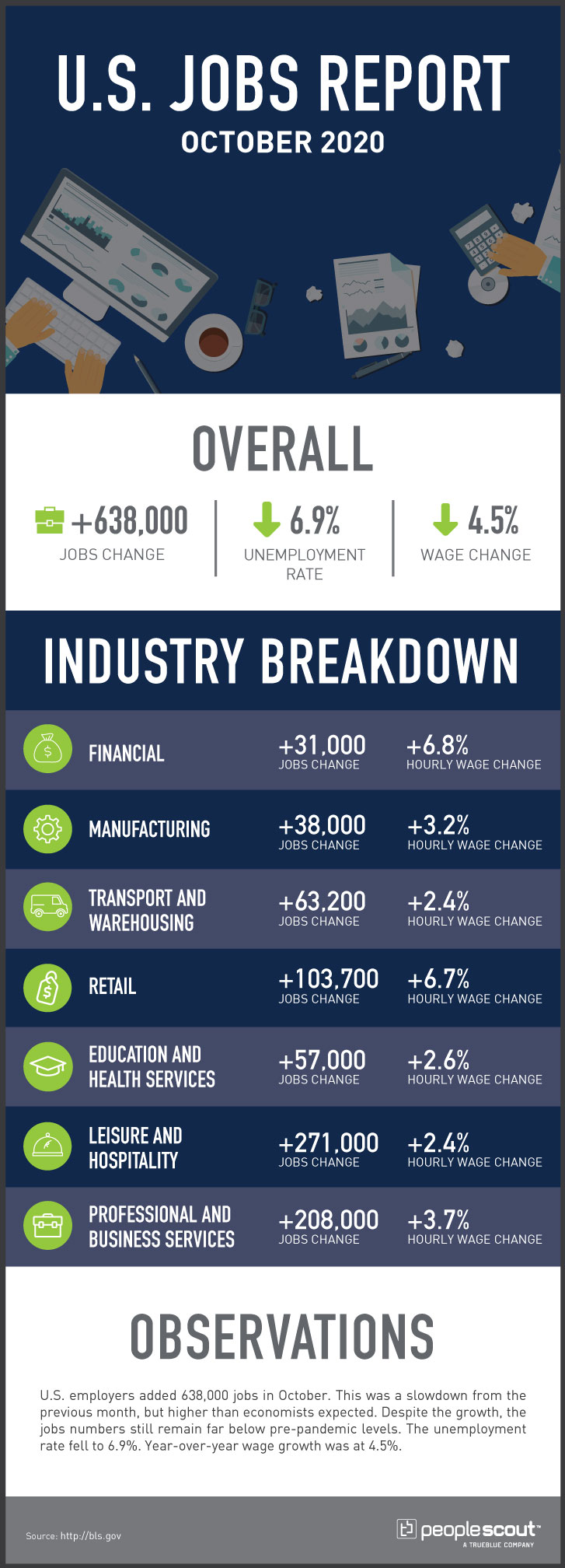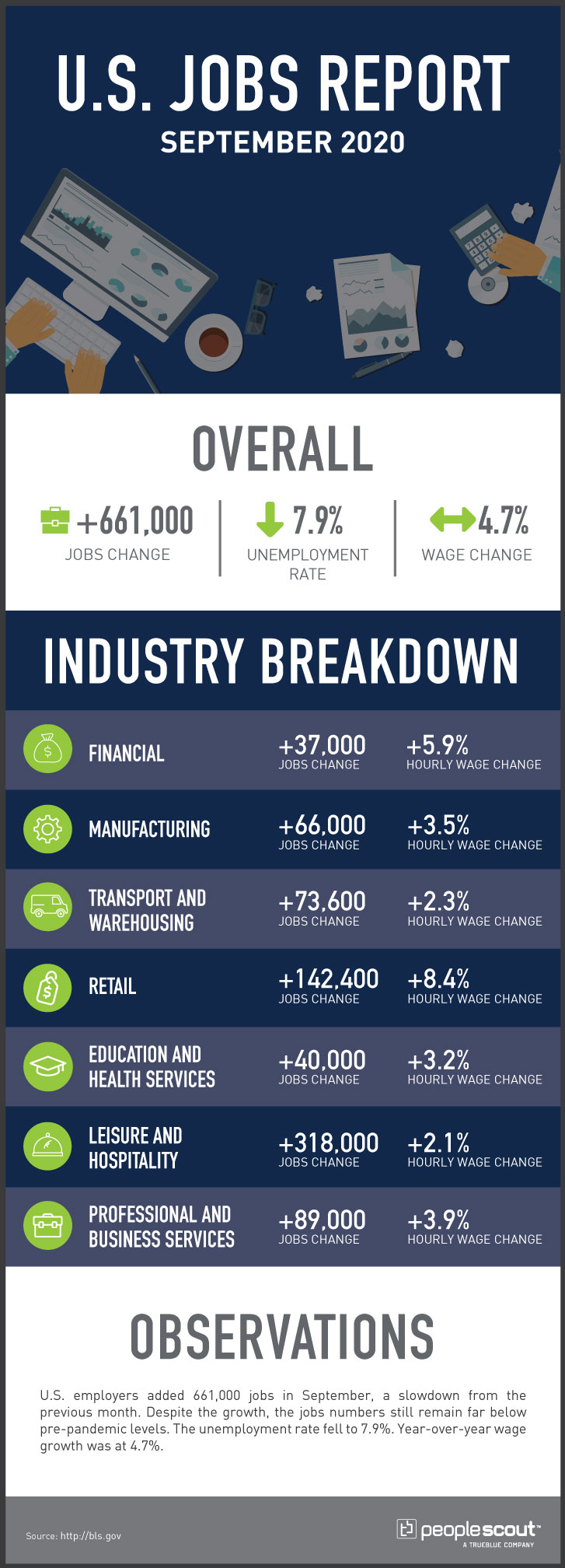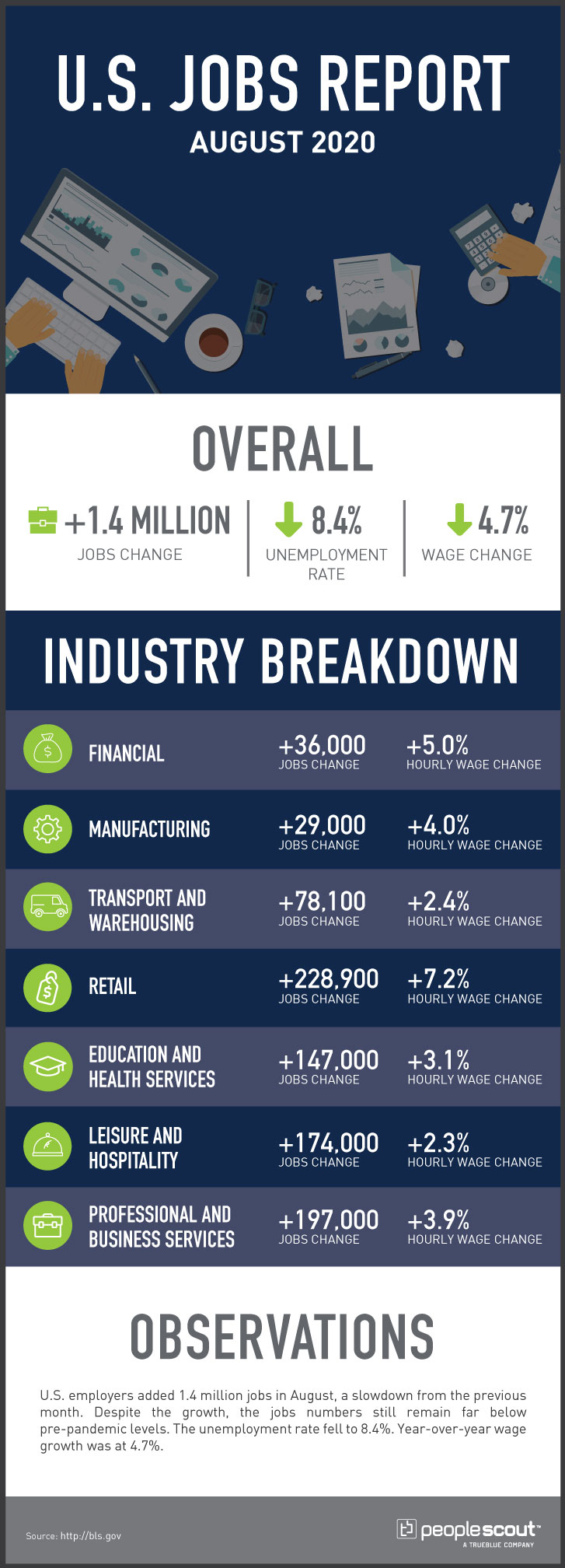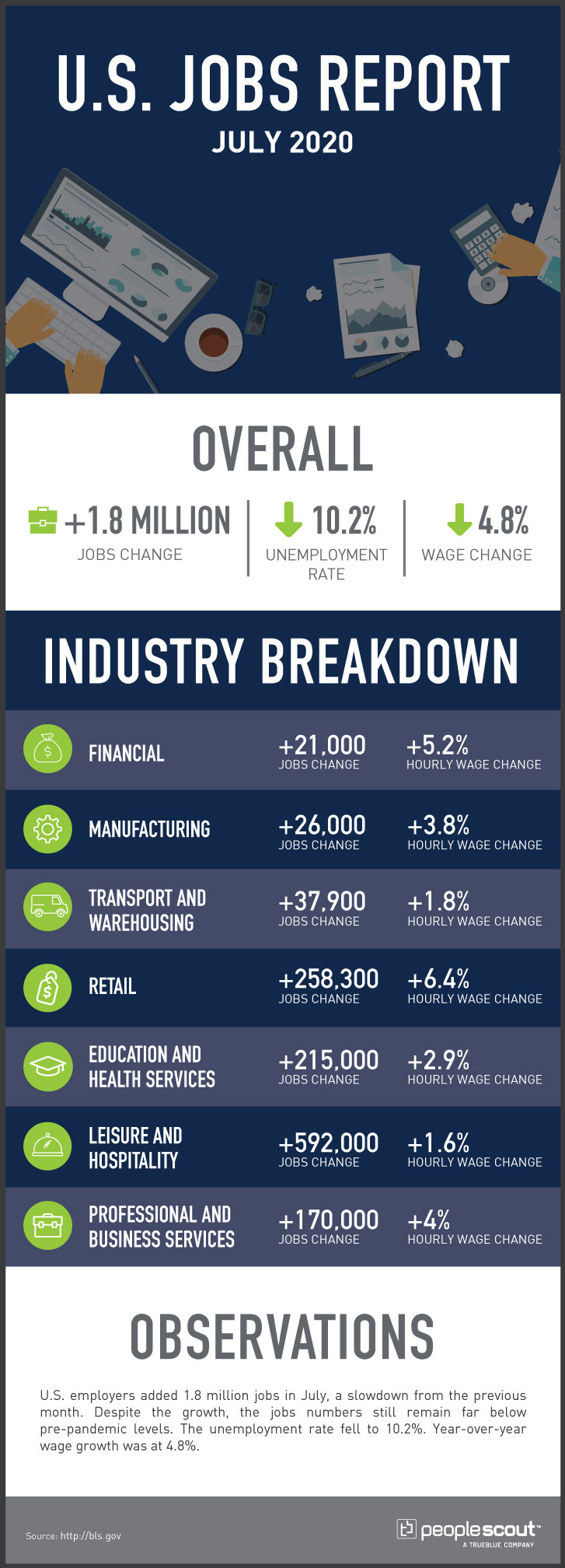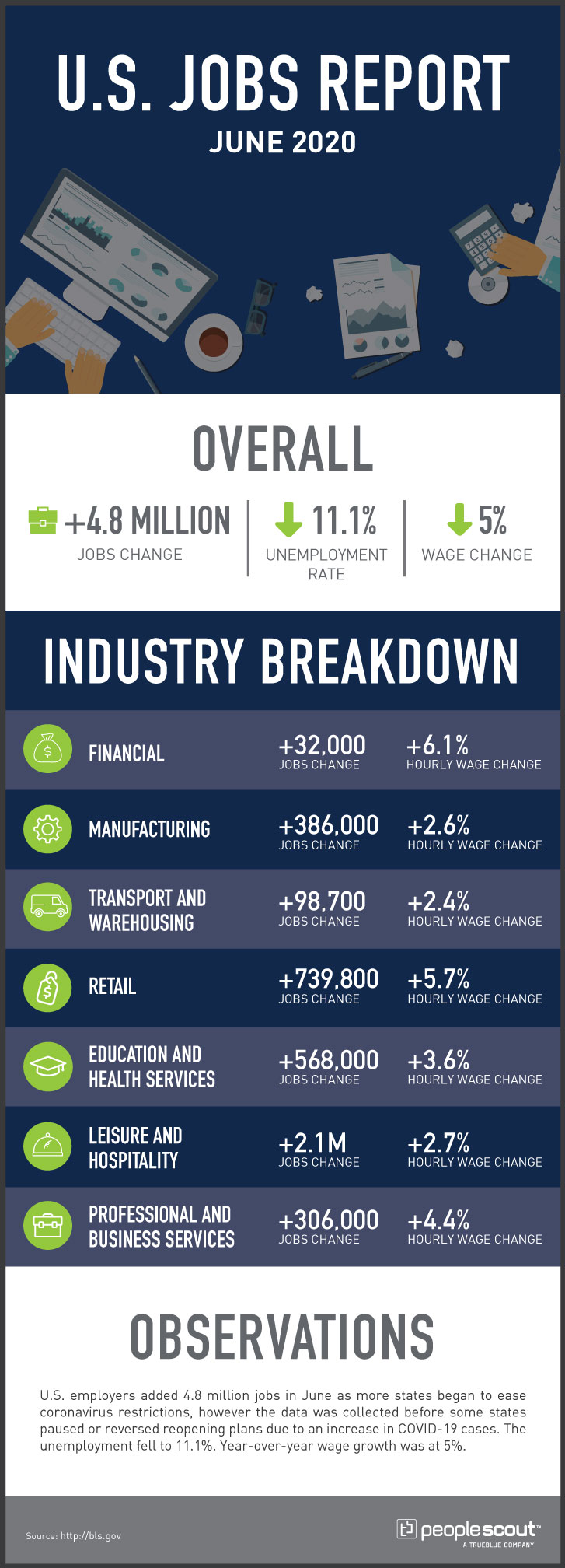The U.S. economy gained 379,000 jobs in February. The numbers beat economist expectations, suggesting that the recovery is gaining steam. However, economists caution that there are still challenges ahead. The unemployment rate fell to 6.2%. Year-over-year wage growth was at 5.3%.
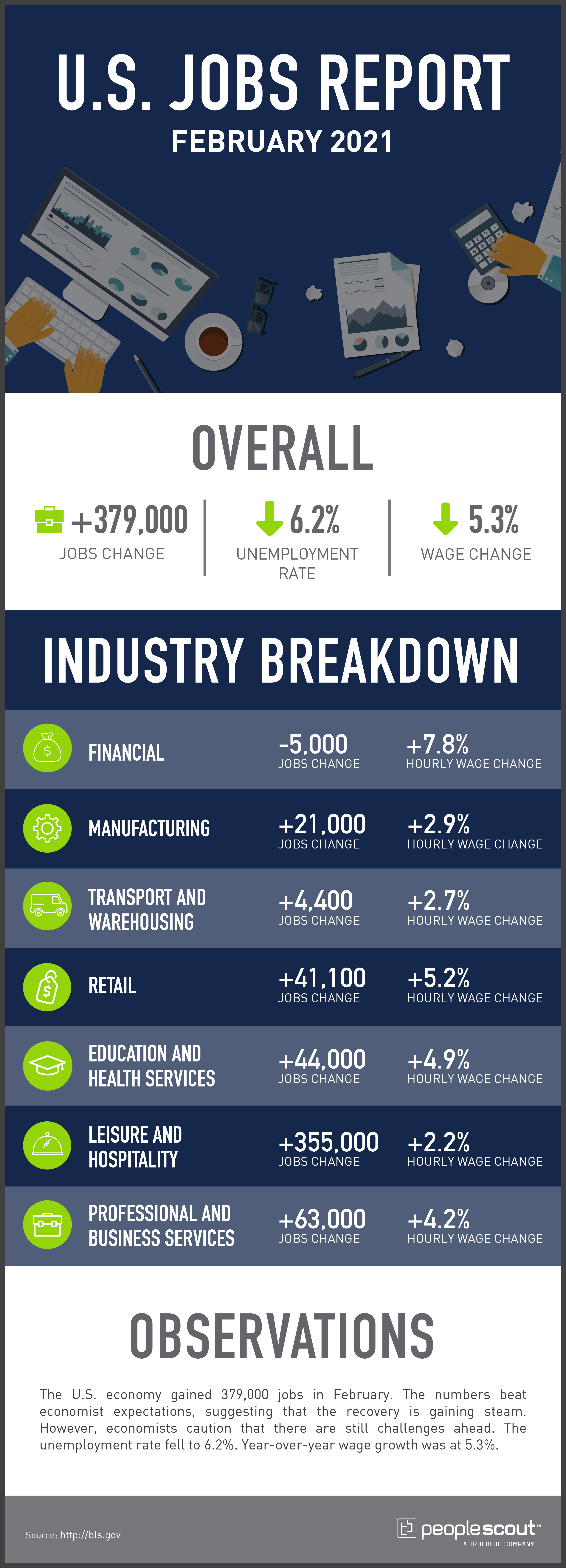
The Numbers
379,000: The U.S. economy gained 379,000 jobs in February.
6.2%: The unemployment rate fell to 6.2%
5.3%: Wages rose 5.3% over the past year.
The Good
The addition of 379,000 jobs to the economy in February suggests that the recovery is picking up steam, the Wall Street Journal reports. Economists had predicted just 210,000 new jobs.
The majority of the job gains happened in the leisure and hospitality sector, which has been the hardest hit by the pandemic. Experts say decreasing coronavirus cases, increasing vaccinations, and the stimulus passed in December likely all contributed to the uptick as consumers are gaining confidence.
The Bad
While there was plenty of good news in February’s report, there is still a long way to go. The U.S. still has 9.5 million fewer jobs than when the pandemic began. Additionally, some sectors, like construction, shed jobs. Though experts say that is likely temporary and related to winter weather conditions.
While the unemployment rate decreased, there was no improvement in the racial disparity in unemployment. As the AP reports, the unemployment rate for white workers fell from 5.7% to 5.6%, but the unemployment rate for Black workers actually rose from 9.2% in January to 9.9% in February. The unemployment rate for Hispanic workers fell from 8.6% to 8.5%.
The Unknown
Economists say this could be the start of a stretch of strong hiring numbers that lasts through the spring. Bloomberg reports that March could potentially see more than a million new jobs, as long as there is not an increase in coronavirus cases. The New York Times also reports that employers see this as the start of a hiring surge.
However, there are a few factors that could impact these predictions. Economists predict that the $1.9 trillion stimulus will have a positive effect, but rising coronavirus cases or a slowdown in school reopening could impact job growth negatively. Ultimately, workers need to both feel safe returning to the workplace and have the childcare options to do so to continue strong economic growth.
